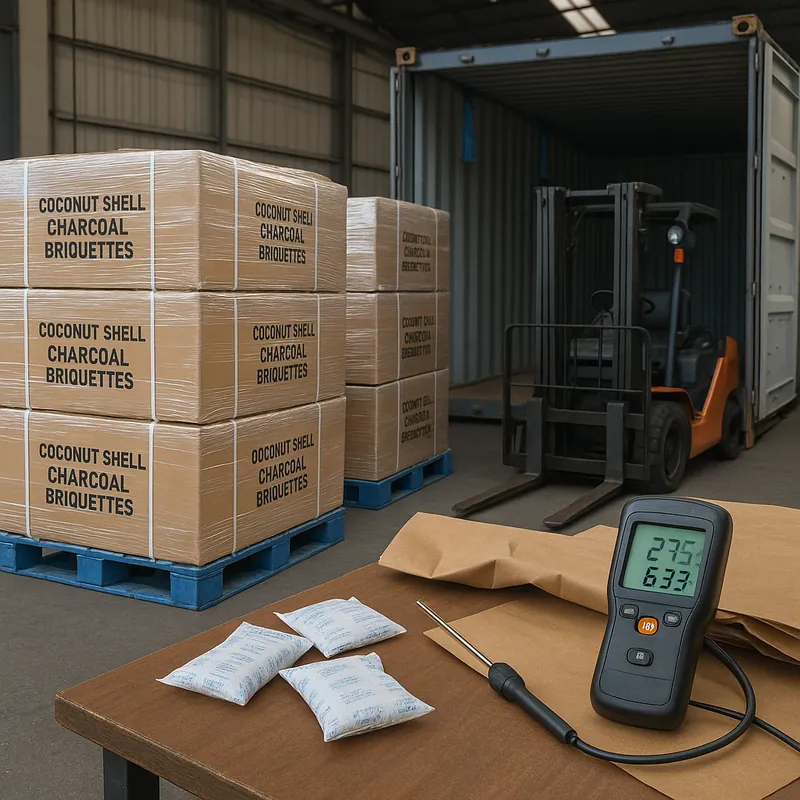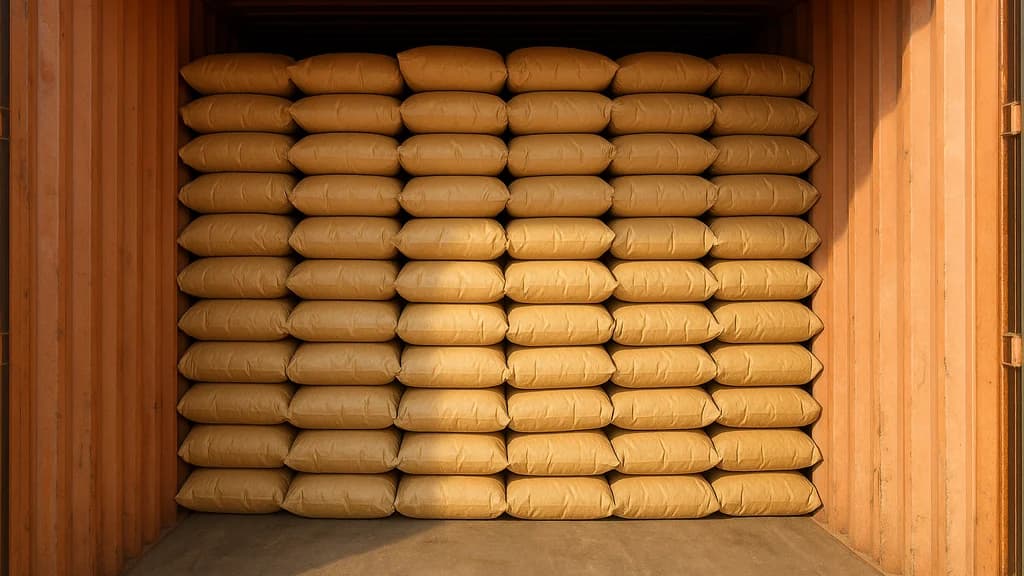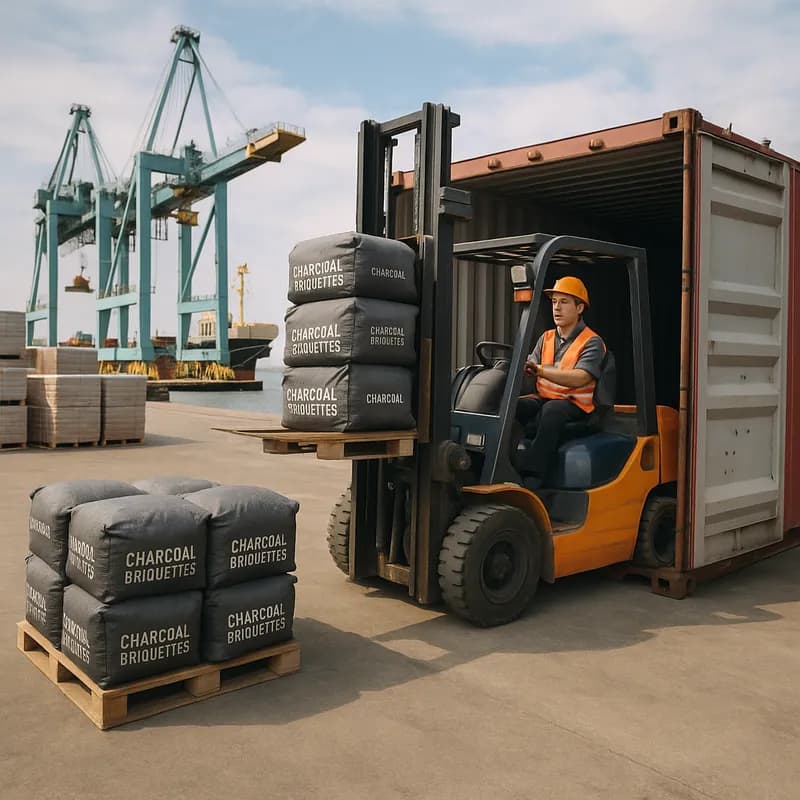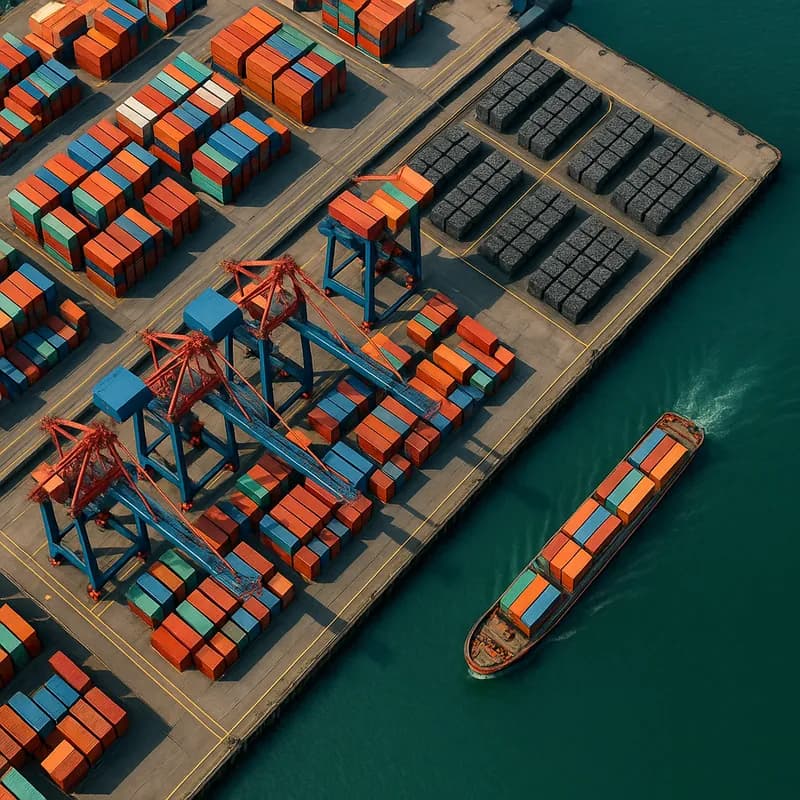Get charcoal import documentation right the first time. Align HS code, IMDG status, and EUDR/Lacey facts to avoid rollovers and holds—use this checklist.
Avoiding Common Pitfalls in Charcoal Import Documentation: A Practical Guide From the Front Lines
The Real Problem
Charcoal moves easily through production. It’s the paperwork that trips people up. We see smart importers lose weeks—and money—because a single detail didn’t match the rules in their market. Was your briquette declared as HS 4402 or 3802? Did you treat it as non-dangerous based on carrier policy, or IMDG Code? Does coconut-shell charcoal fall under the EU Deforestation Regulation (EUDR)? These aren’t academic questions; they determine whether your container sails or sits.
In our experience, the biggest risk isn’t a missing document—it’s a mismatch between product, classification, and regulatory regime. Charcoal straddles odd boundaries: processed plant material but sometimes treated like wood; potentially self-heating but often shipped as non-DG; a “simple” product that now intersects with due diligence regimes like EUDR and the U.S. Lacey Act. Add carrier-specific rules, and confusion multiplies.
Here’s the thing: once you align your HS classification, safety status, and origin/traceability evidence, everything else falls into place. Do that, and customs questions become routine instead of existential. That’s what we’ll focus on—what actually works, where most people go wrong, and the steps to move from “hope it clears” to “it clears every time.”
What Actually Works
Start by building a documentation set that answers customs officers’ and carriers’ real questions: What is the product? Is it safe to ship? Where did it come from? Is it legally harvested? Then tailor to the lane (US, EU, UK) and to your carrier.
What HS code should I use for charcoal vs activated carbon?
Use HS 4402 for non-activated charcoal, including wood and shell/nut charcoal (e.g., coconut shell briquettes). This is the correct heading for BBQ and shisha briquettes that are not activated.
Use HS 3802 for activated carbon (chemically or physically activated to increase surface area). If your product is marketed for filtration or has activation specs (iodine number, surface area), you’re likely in 3802.
A quick self-check:
- BBQ or shisha briquettes with starch binders? HS 4402.90.
- Powder or granular product with activation? HS 3802.
- Don’t “upgrade” to 3802 because it looks more technical; that misclassification is a common trigger for queries.
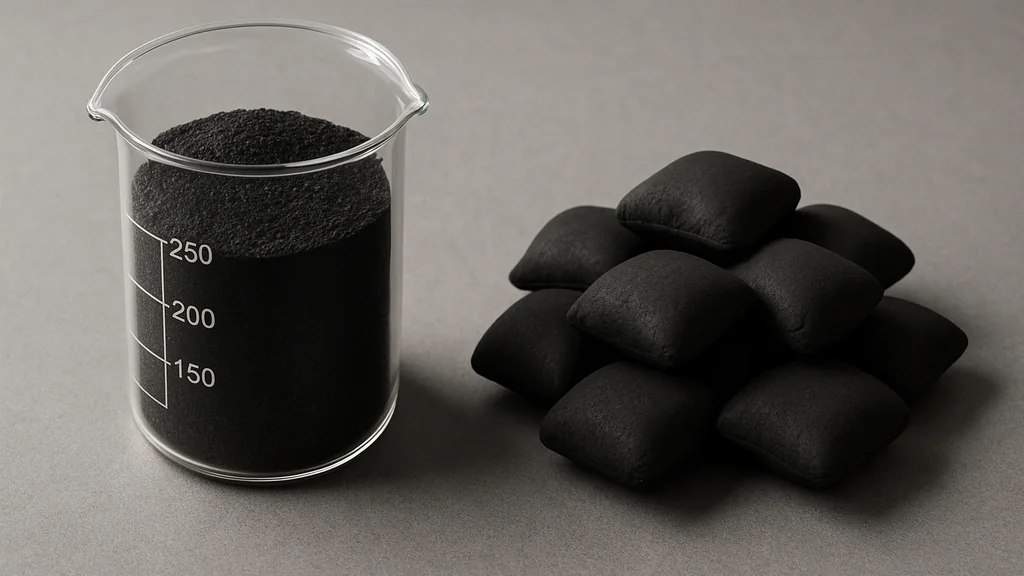
Practical takeaway: Align your commercial description to your code—e.g., “Coconut shell charcoal briquettes, non-activated, HS 4402.90—BBQ fuel.”
Do I need a phytosanitary certificate to import charcoal?
Usually no. Fully carbonized charcoal (HS 4402) is generally exempt from phytosanitary certification because the carbonization process eliminates pest risk. We’ve shipped thousands of tons into the US, EU, and UK without a phytosanitary certificate.
Exceptions and edge cases:
- Some Middle Eastern and African ports, or specific buyers, still ask for phyto out of habit. When that happens, a manufacturer heat-treatment declaration plus a fumigation/non-infestation letter often satisfies the concern.
- If your product is not fully carbonized or you’re shipping raw wood mixed with charcoal, rules change. Don’t mix.
Practical takeaway: Confirm with your broker for the exact port, but plan to provide a heat-treatment/carbonization declaration rather than a phytosanitary certificate.
Is charcoal classified as dangerous goods under the IMDG Code?
By default, wood/shell charcoal can fall under Class 4.2 (self-heating), typically shipped as UN 1361, Carbon (animal or vegetable origin). That’s the conservative IMDG position.
However, many coconut-shell briquettes aren’t self-heating. If you can demonstrate your product is not liable to self-heating per the UN Manual of Tests and Criteria (Test N.4), most carriers will accept it as Non-DG with:
- A recent UN N.4 self-heating test report (ISO/IEC 17025 lab like SGS, Intertek, or BV)
- A Non-Dangerous Goods declaration letter referencing the test report
- SDS (helpful, not always mandatory)
Practical takeaway: Decide early—ship as DG (UN 1361) or as Non-DG with a valid N.4 report—then book accordingly. Carrier policies differ; ask before you promise transit times.
How can I prove my charcoal briquettes are non–self-heating to the carrier?
Do three things:
- Get the UN Test N.4 report: Run the 25 mm/100 mm cube tests and, if requested, the 140 mm test. Ensure the lab references the UN Manual of Tests and Criteria, Part III, subsection 33.3.1.6.
- Control your process: We hold briquettes for 72–96 hours post-pressing to cool, target moisture under 8%, avoid oil contamination, and check core temps before packing. Record it.
- Package and stuff smart: Use dry containers, kraft liners or pallets, and adequate desiccants. Keep a stuffing photo log and container condition report.
In our experience, sending the lab report plus a “non-self-heating controls” one-pager reduces carrier queries to near zero.
What is a Lacey Act declaration for charcoal and how do I file it?
The U.S. Lacey Act requires importers to declare the scientific name, value, quantity, and country of harvest for many plant products. Whether HS 4402 is actively enforced has varied by phase; some brokers file by default. Check current APHIS scope via your broker or ACE HTS lookup.
If required, you (or your broker) submit an electronic PPQ 505 declaration in ACE. For coconut-shell briquettes, that typically includes:
- HTS: 4402.90
- Common name and scientific name: Coconut shell (Cocos nucifera)
- Country of harvest: Indonesia (or the actual harvest country for the shell)
- Quantity and unit (weight)
- Note binders if plant-derived: e.g., tapioca starch (Manihot esculenta). Yes, the binder species can be requested.
Pro tip: Don’t put “mixed tropical hardwoods” if you actually use coconut shell. Vague species entries trigger holds. We pre-fill Lacey data for customers to avoid guesswork.
Does the EU Deforestation Regulation (EUDR) apply to charcoal?
Yes—charcoal under CN 4402 is listed in EUDR Annex I. That includes “shell or nut charcoal.” Large EU operators/traders have been required to submit due diligence statements since 30 Dec 2024; SMEs follow from 30 Jun 2025.
What your EU buyer needs from you:
- Geolocation of the production areas where the biomass originated (for coconut shell, this can mean supply-region polygons and mills/sourcing sites)
- Evidence the material is deforestation-free and produced legally in country of origin (cutoff date 31 Dec 2020)
- A documented risk assessment and, if needed, risk mitigation
- A due diligence statement lodged in the EU Information System before release for free circulation
Reality check: There’s debate about non-wood charcoals, but CN 4402 is in scope. We provide EUDR data packs for our coconut-shell supply chain so buyers can lodge statements with confidence.
What documents are required to import charcoal into the US/EU/UK?
All lanes
- Commercial invoice (accurate HS code and clear product description)
- Packing list
- Bill of lading (or AWB)
- Certificate of origin (Chamber-issued; useful even if duty is zero)
- SDS and product spec sheet (fixed carbon, ash, moisture)
United States
- Lacey Act declaration (if in scope for your HTS and current enforcement)
- No phytosanitary for fully carbonized charcoal
- If DG: IMDG Shipper’s Declaration; if Non-DG: Non-DG letter + lab report
European Union
- EORI (importer)
- EUDR due diligence statement (operator lodges prior to customs)
- No phytosanitary for fully carbonized charcoal
United Kingdom
- EORI (importer)
- UK Timber Regulation-style due diligence (recordkeeping/assurance by first placer)
- No phytosanitary for fully carbonized charcoal
Practical takeaway: Align docs to the lane. Don’t forget the carrier packet (SDS, Non-DG letter, test report) even when customs doesn’t ask for it.
Why Most People Get This Wrong
Three patterns cause most delays.
First, misclassification. We routinely see briquettes declared as “activated carbon” (HS 3802) because the term sounds premium. Customs then asks for activation parameters (iodine number, BET surface area). If you can’t show activation, you’ve just signaled misdeclaration. Conversely, real activated carbon misdeclared as 4402 gets seized or reclassified with penalties.
Second, assuming “charcoal isn’t dangerous.” Some carriers accept non-self-heating briquettes as Non-DG with a test report; others default to DG unless you follow their exact format. Booking as Non-DG and delivering a container without the promised lab report is a fast path to rollovers.
Third, underestimating EUDR and Lacey Act details. “Coconut isn’t wood, so EUDR doesn’t apply,” we still hear. But CN 4402 is listed. On Lacey Act, some importers file “unknown species” or skip the binder species. Audits catch this. The fix is simple—use precise species names and keep a clean supply chain story.
One more subtle mistake: inconsistent descriptions across documents. If your invoice says “BBQ briquettes,” the packing list says “activated carbon,” and the SDS says “shisha charcoal,” you’ll be explaining for days. Make your narrative consistent and boring (in a good way).
Your Next Steps
-
Nail your classification and description
- Decide: 4402 (non-activated briquettes) or 3802 (activated carbon).
- Use a consistent description across invoice, packing list, and SDS.
-
Decide your IMDG posture now
- If Non-DG: order a UN Test N.4 (allow 7–10 days), prepare a Non-DG letter, and share with your carrier pre-booking.
- If DG: book space as UN 1361, Class 4.2, and issue a Shipper’s Declaration.
-
Prep your lane-specific compliance
- US: Confirm Lacey Act scope for your HTS. If required, pre-fill species (Cocos nucifera, plus binder species like Manihot esculenta) and file via ACE with your broker.
- EU: Coordinate EUDR due diligence with your buyer. Provide geolocation, legality evidence, and traceability documents early so they can lodge the statement before arrival.
- UK: Ensure your buyer has due diligence documentation (supply chain, legality statements) on file.
-
Build a clean carrier package
- SDS, test report (if Non-DG), Non-DG or DG declaration, loading photos, container condition, moisture/temperature logs. Send it before the container hits the terminal.
-
Use products and partners that reduce friction
- Our BBQ Coconut Shell Charcoal Briquettes ship with stable moisture control, low ash, and available UN N.4 test reports and SDS—making Non-DG bookings straightforward with most lines. The same documentation discipline applies to our Shisha Charcoal when relevant.
Timeline tip: From sample to first shipment, allocate 2–3 weeks to set up lab testing, EUDR/Lacey templates, and carrier approvals. After that, repeat shipments become routine.
If you have questions about Avoiding Common Pitfalls in Charcoal Import Documentation or need expert guidance, contact our team. We’ve moved charcoal into 50+ countries and can share the exact templates and test formats carriers and customs actually accept.
Practical takeaway: Treat documentation like part of the product. When your HS code, safety status, and origin story line up, customs clearance and carrier acceptance become predictable—and that’s the real edge in this business.
